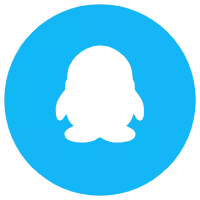The structure and type of sewing machine
2021-08-20
Principle of sewing machine:
The core of the sewing machine is the loop stitching system. The sewing machine only needs to pass the needle part through the fabric. On the needle, the eye of the needle is just behind the tip, not at the end of the needle. The needle is fixed on the needle bar, and the needle bar is pulled up and down by a motor through a series of gears and cams. When the tip of the needle passes through the fabric, it pulls out a small loop on one side and the other. A device under the fabric will grab this loop and wrap it around another thread or another loop of the same thread. The simplest loop stitch is chain stitch. If you want to sew chain stitches, the sewing machine uses the same length of thread to loop the back of the thread. The fabric is located on a metal plate under the needle and is fixed with a presser foot. At the beginning of each stitching, the needle passes through the fabric to draw a loop. A device that makes a loop grasps the loop before the needle is pulled out, and the device moves in synchronization with the needle. Once the needle pulls out the fabric, the feed dog device will pull the fabric forward. When the needle passes through the fabric again, the new stitch will pass directly through the middle of the previous stitch. The coil-making device will grab the wire again and make a coil around the next coil. In this way, each coil will hold the next coil in place. The main advantage of chain stitching is that it can be stitched very fast. However, it is not particularly strong. If one end of the thread is loosened, the entire sewing may loosen. Most sewing machines use a stronger type of seam called a lockstitch. The most important components of the lock stitching device are the hook and spool assembly. The spool is a coil of thread placed under the fabric. It is located in the center of the shuttle, which rotates under the drive of a motor, synchronized with the movement of the needle. As with chain stitching, the needle pulls out a loop through the fabric, and it rises again while the feed dog moves the fabric forward, and then nests another loop. However, this stitching mechanism does not connect the different loops together, but connects them to another piece of wire that is loosened from the spool. When the needle wraps the thread into the loop, the rotating shuttle uses the crochet needle to grasp the loop. As the shuttle rotates, it draws a loop around the thread from the spool. This makes the stitch very strong. This kind of rotary shuttle also evolved from the straight shuttle.
The structure of the sewing machine:
General sewing machines are composed of four parts: machine head, machine base, transmission and accessories. The head is the main part of the sewing machine. It is composed of four mechanisms of material stabbing, thread hooking, thread take-up and feeding, and auxiliary mechanisms such as thread winding, material pressing, and tooth dropping. The motion of each mechanism is reasonably coordinated, working in cycles, and sewing the sewing materials together. The base is divided into two forms: table plate and case. The table of the table type machine base plays a role of supporting the machine head, and is used as a work table during sewing operations. There are many styles of tabletops, including one bucket or more buckets, folding Tibetan type, cabinet type, writing desk type, etc. The case of the case type machine base plays a role of supporting and storing the machine head, making the sewing machine easy to carry and store. The driving part of the sewing machine is composed of parts such as a frame, a hand crank or a motor. The frame is the pillar of the machine, supporting the platform and pedals. When in use, the operator steps on the foot pedal, the crank drives the rotation of the pulley, and the belt drives the head to rotate. Most hand cranks or motors are directly mounted on the machine head. The accessories of the sewing machine include needles, bobbins, knives, oil cans, etc.






